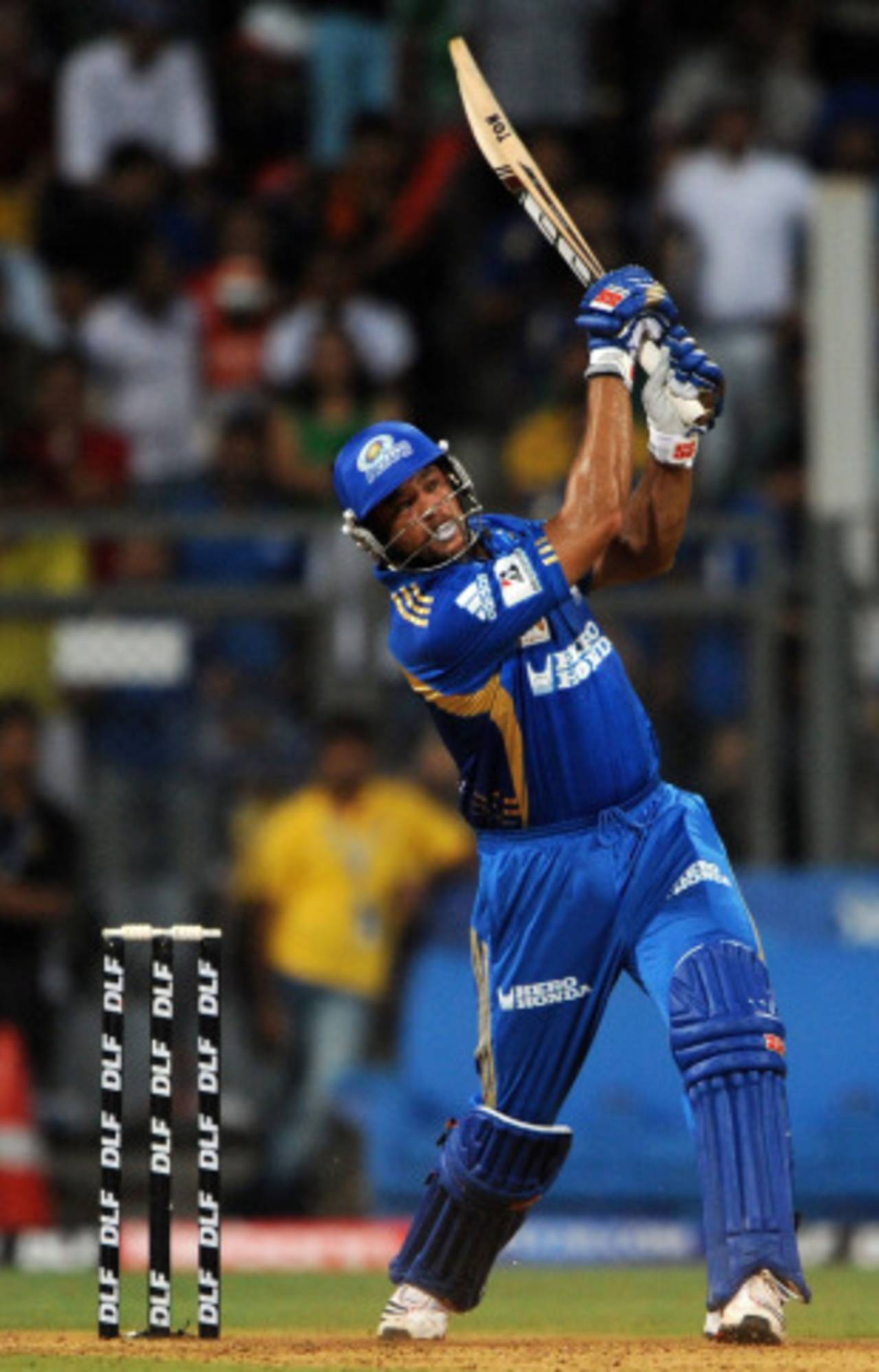How do you determine the value of a player?
It won't be long before IPL franchisees figure out a formula to calculate the true worth of players
Ian Chappell
24-Apr-2011

Andrew Symonds has got only two turns to bat in Mumbai's first five games. Is spending US$850,000 on him justified? • AFP
It's ironic that currently cricketers receive the highest pay for playing the shortest game. Three hours of effort in an IPL match reaps far greater rewards for a player than a gruelling five-day Test. This doesn't make sense - economic or cricketing - but it's a matter of supply and demand.
However, in the same way that businessmen establish a worth for their employees, IPL owners and other franchisees around the world will eventually find a way to put a value on players. When that happens, cricketers will have to get used to fewer rich contracts that don't make sense. After all the franchisees are businessmen who didn't amass their fortunes by making poor deals. It won't be long before they realise - some already have - a player has a certain value and beyond that mark you're over-paying for talent. As a witty economist once said: "The ancient Greeks used to sit around and argue whether men or women have more hair on their head. Did they ever think to count?"
The first figure the franchises will need to arrive at is the value of a win. There's more to it than just the prize money, as a franchise can add to its value by building a winning tradition. Once a win can be roughly valued, then a reasonable estimate can be made of each player's worth. The franchise owners can better decide what is value for money in each player's case.
Obviously for marquee players like Sachin Tendulkar, MS Dhoni, Shane Warne, Kevin Pietersen and company, there's also a marketing value to be added. These players can't be judged solely on what they do on the field, even though they represent good value as cricketers.
A quick look at the early going in this year's IPL gives a clear indication that the latest auction has produced a few potential steals and some dud deals. The Mumbai Indians appear to have gone to auction with more money than sense. To pay a huge fee for both Andrew Symonds and Kieron Pollard, two powerful strikers who field well and can bowl a bit, seems to be a case of overkill. Both are able to play a full season, so why not buy only one and have a cheap replacement available if the star player is injured?
In the first five matches Pollard faced two balls and Symonds hit just two sixes, with neither contributing greatly to a Mumbai win. Forget the economics, having both those players in a side where Tendulkar is renowned for regularly batting a good proportion of an innings that only lasts 120 balls doesn't make cricketing sense.
Both Pollard and Symonds are viable propositions if they are regularly clouting sixes and contributing to at least a couple of victories a season. It's difficult for that to happen when neither is getting much time at the crease. As one of the rich clubs, Mumbai can afford to make a few monetary mistakes but eventually even the high rollers tire of fiscal folly.
Some of the less affluent clubs can't afford to make million-dollar mistakes. They are looking for bargains - a reasonable value player who performs extremely well. In that category, both Jesse Ryder, for the Pune Warriors, and Paul Valthaty, of the Kings XI Punjab, represent good value for money in the early going.
In 2003 the bestselling author Michael Lewis wrote Moneyball, a book in which he delved into the art of valuing baseball players in America. The gist of the book was about how the general manager of a less affluent club was utilising modern statistics to unearth players who were undervalued. Since then, even more sophisticated statistics have been devised in baseball to give a rough indication of what a win is worth.
A similar statistical transition will take place in Twenty20 and eventually this may even flow through to the longer games. So the message is clear to cricketers: enjoy the high wages for short games because soon "value for money" will become the owners' catch-cry.
Former Australia captain Ian Chappell is now a cricket commentator and columnist